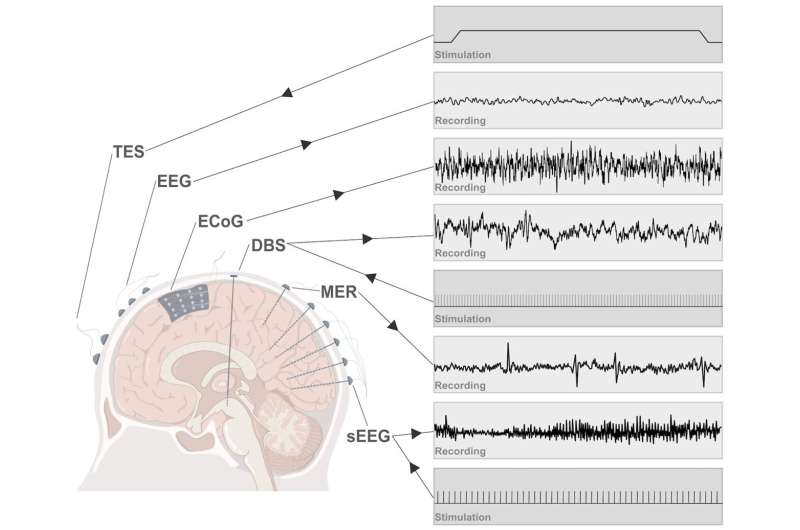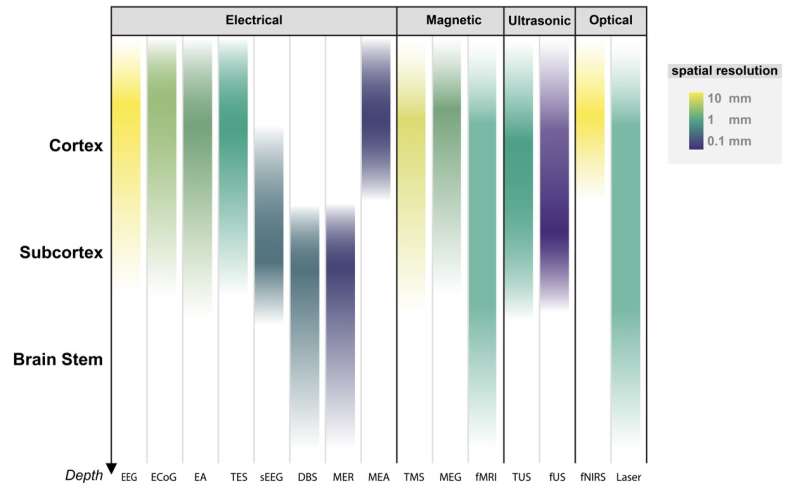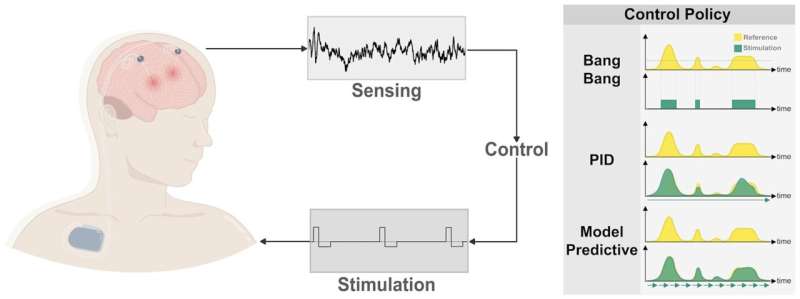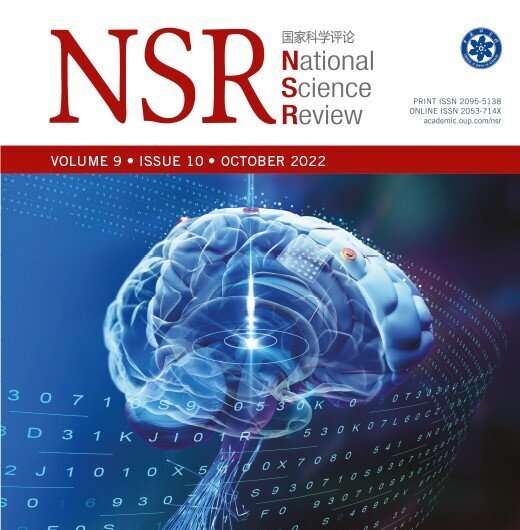Major electrical recording and stimulation approaches for brain machine interfaces. Credit: Science China Press
Brain-Machine Interface (BMI, also known as Brain-Computer Interface) provides a new dimension for humans to interact with machines and the environment. Brain-machine interfaces help restore or improve human physical or mental functions. In an article recently published in National Science Review, scientists investigated a variety of technologies to interact with the brain at different levels.
The cerebral cortex has long been the research target of brain-machine interface studies. By recording neural activity in multiple cortical regions to understand human intent, researchers can enable paralyzed patients to control robotic arms and prosthetics as well as help disabled people communicate effectively.
Conventional brain-computer interfaces allow us to decode sensory and motor signals such as visual responses, hand movements, and speech in a constrained lab environment. However, it is still challenging to apply these technologies to everyday life.
Deep brain regions are heavily involved in basic life functions. It is necessary to investigate deep brain functions to achieve better understanding of how the brain works. Subcortical brain regions are the main targets for invasive neuromodulation and clinical neurotherapy.
-
Common approaches for sensing and modulating human brain. Credit: Science China Press
-
Sensing and modulation via deep brain machine interface. Credit: Science China Press
Structural and functional abnormalities of the human deep brain are observed in a variety of neurological and psychiatric disorders, including Parkinson's disease, Alzheimer's disease, depression, and obsessive-compulsive disorder. Deep brain machine interfaces focus on understanding and modulating neural activities in deep brain regions. It is an emerging research field with great potential for clinical applications.
In addition to recording and decoding, deep brain machine interfaces are also able to modulate pathological states of the brain by delivering therapeutic stimuli. Advanced DBMI technology is designed to record and decode deep neural activity with high spatiotemporal resolution and efficiently configure stimulation parameters for precise modulation of brain states. Developing DBMI with long-term efficacy remains challenging due to our limited understanding of the mechanisms including plasticity and adaptations of the central nervous system.
Since the nervous system mainly transmits information through electrical signals, brain-computer interfaces mediated by electrical signals have attracted the most research interest in this field. The article outlines the current neural electrical activity-based brain-computer interface technologies available for humans and the applications in sensing and modulating brain activity.
Special Topic: Brain Machine Interface(Front cover of National Science Review). Credit: Science China Press
The authors introduce two widely used deep brain interface systems, deep brain stimulation (DBS) and stereotactic electroencephalography (sEEG), with special attention to the latest technological advances and clinical applications. The potential of DBMI to be used as powerful brain research platforms and their therapeutic utility are addressed. The paper also discusses the closed-loop control framework of DBMI systems, and the development of closed-loop deep-brain interface technology for clinical applications.
More information: Yanan Sui et al, Deep brain–machine interfaces: sensing and modulating the human deep brain, National Science Review (2022). DOI: 10.1093/nsr/nwac212
Provided by Science China Press


























